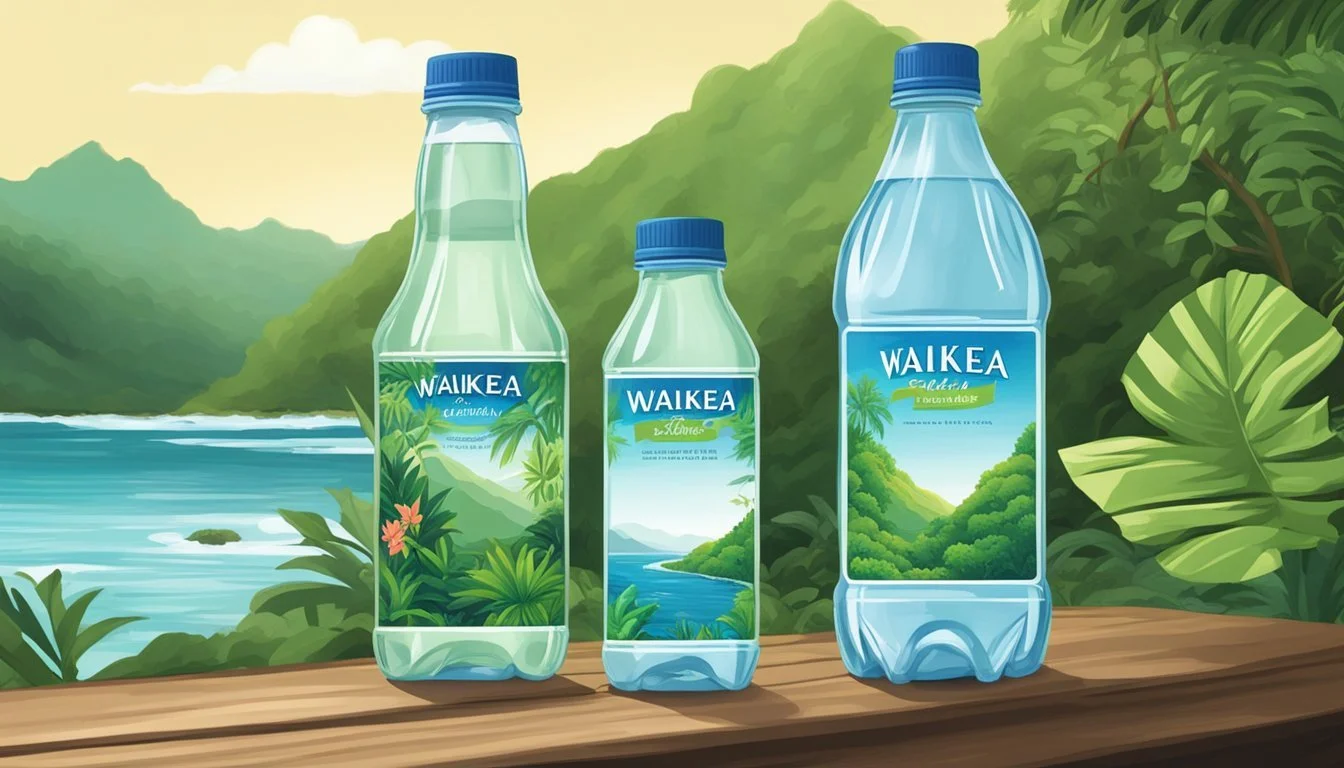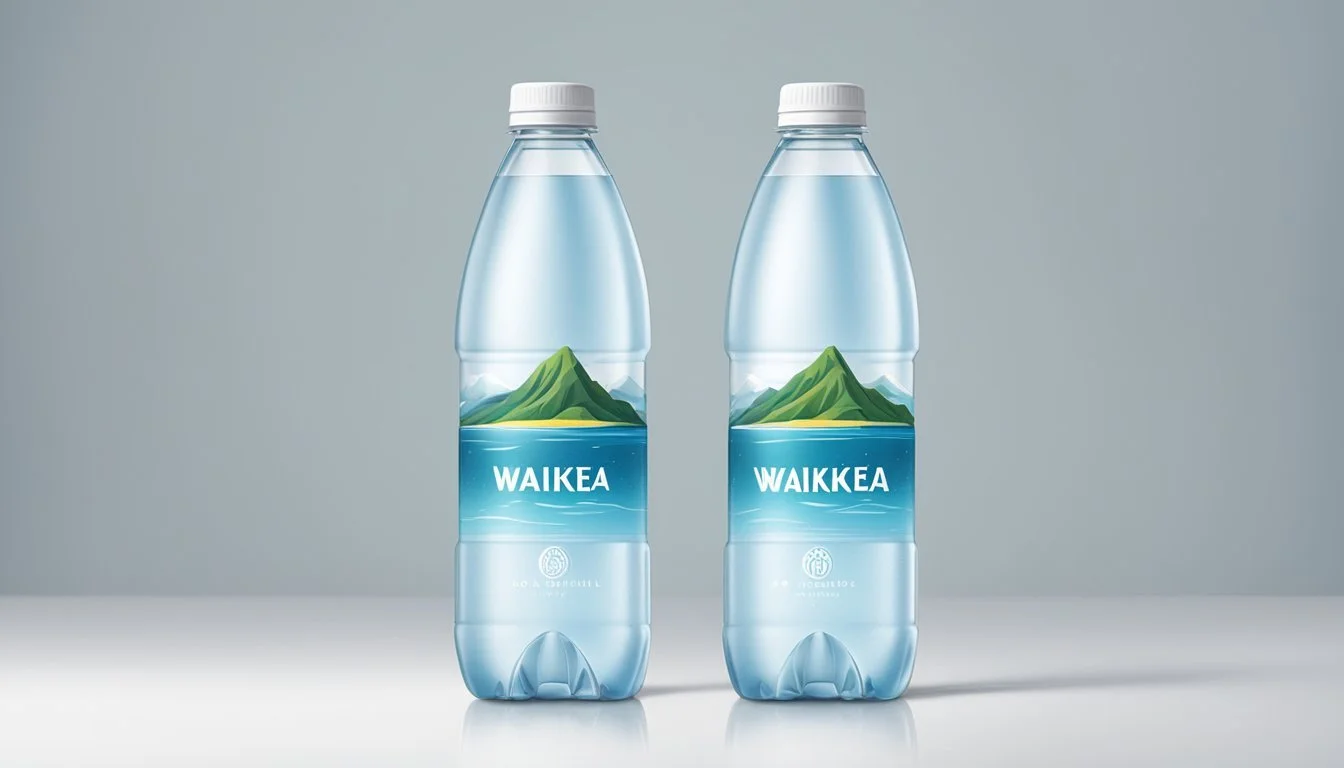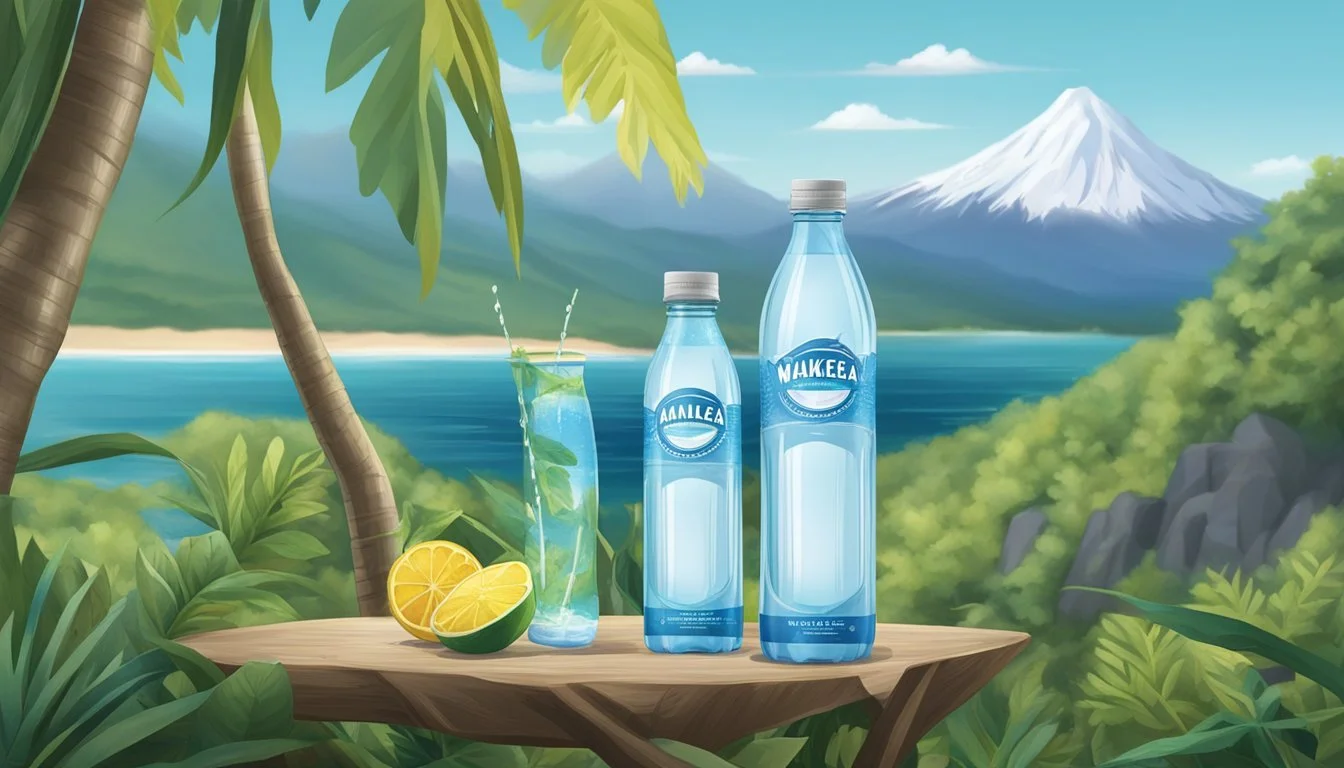Waiakea vs. Big Chill
Comparing the Best Bottled Waters
When it comes to choosing the best bottled water, Waiakea and Big Chill often come up in the conversation. Waiakea stands out for its unique volcanic source and naturally alkaline pH, offering a smooth and slightly sweet taste that many find refreshing. Waiakea is not just about taste; it also emphasizes sustainability with its bottling practices, using 100% recycled plastic and renewable energy.
Big Chill contrasts with Waiakea by its focus on accessibility and purity. While specific details about Big Chill's sourcing and environmental practices are less highlighted, it is known for being a straightforward choice for those looking for reliable bottled water without the premium price tag.
Each brand offers distinct benefits catering to different consumer preferences. The choice between Waiakea and Big Chill ultimately depends on whether you prioritize unique taste and sustainability or straightforward, accessible hydration.
Comparing the Brands
Waiakea and Big Chill cater to different preferences and market positions. This section provides a detailed comparison to help you decide which brand might suit your needs best.
Brand Overview
Waiakea Water originates from Hawaii and utilizes a unique filtration process through volcanic rock, resulting in water rich in alkaline minerals and silica. The brand emphasizes sustainability, offering BPA-free and 100% recycled bottles.
Big Chill, on the other hand, sources its water from natural springs. Known for its pure taste, Big Chill focuses on minimal processing to maintain the water’s natural properties. Bottles from Big Chill are also recyclable and BPA-free.
Market Position
Waiakea positions itself as a premium, eco-friendly brand. It markets heavily towards health-conscious consumers who value sustainability. The brand has garnered attention for being the first US bottled water to achieve Carbon Neutral certification.
Big Chill targets a broader audience with an emphasis on value and simplicity. While it doesn’t highlight eco-credentials as much as Waiakea, Big Chill remains popular for its consistent quality and affordability. This makes it a strong competitor in the mainstream bottled water market.
Target Consumer
Waiakea appeals to consumers who prioritize both health and environmental impact. Its high mineral content and eco-friendly approach attract those looking for something beyond just hydration.
Big Chill aims at consumers who seek reliable, accessible bottled water. It’s favored by those who prefer natural spring water without the premium price. Big Chill’s straightforward branding makes it a go-to for everyday hydration without added frills.
Source and Filtration
Waiakea and Big Chill bottled waters both come from unique sources and employ distinct filtration processes that impact their taste and quality.
Unique Water Sources
Waiakea water originates from the slopes of Mauna Loa volcano in Hawaii. This water source is significant because the water undergoes natural filtration through porous volcanic rocks. The volcanic water is captured 2,400 miles from the nearest industrial landmass, ensuring minimal contamination.
Big Chill sources its water from natural springs. Unlike Hawaiian volcanic water, this natural spring water is collected from aquifers. These are underground layers of water-bearing rock that naturally filter the water.
The unique origins of each brand give them distinct mineral compositions and flavors.
Filtration Processes
The filtration process of Waiakea involves natural filtration through 14,000 feet of porous volcanic rock. This type of natural filtration imparts minerals like calcium, magnesium, and silica. It also raises the water's pH to 8.8, making it naturally alkaline.
Big Chill utilizes a different method. Their water undergoes reverse osmosis, a sophisticated purification process that removes impurities and ensures consistent quality. The reverse osmosis process effectively eliminates contaminants while maintaining essential minerals for a balanced taste.
Both brands prioritize high-quality water but use different methods to achieve this.
Health and Hydration
Choosing between Waiakea and Big Chill bottled water involves evaluating their hydration benefits, mineral content, and health impacts. Each brand offers different attributes relevant to overall well-being.
Hydration Benefits
Waiakea water is naturally alkaline, with a pH of 8.2, which can aid in neutralizing body acidity and promoting hydration. Alkaline water is believed to enhance hydration compared to regular water. Big Chill, on the other hand, focuses on pure, straightforward hydration, sourced from pristine natural springs.
Both brands aim to provide effective hydration, but Waiakea's naturally alkaline qualities may offer extended hydration benefits, potentially appealing to those with an active lifestyle or those seeking balanced pH levels in their drinking water.
Mineral Content
Waiakea water stands out for its diverse mineral content, including calcium, magnesium, potassium, and silica. These minerals are naturally absorbed as the water filters through volcanic rock. For example, Waiakea offers 32.4 mg of silica, supporting collagen synthesis.
Big Chill emphasizes a clean mineral profile with essential electrolytes, focusing on purity and minimal processing. While both provide essential minerals necessary for health, Waiakea's broader mineral range may be more beneficial for those looking for comprehensive mineral content.
Mineral Waiakea (mg/L) Big Chill (mg/L) Calcium Varied TBD Magnesium Varied TBD Potassium Varied TBD Silica 32.4 TBD
Health Impacts
Drinking Waiakea water may have several health benefits due to its mineral-rich profile. Silica supports bone, skin, and hair health. The alkaline nature of Waiakea water can potentially aid in digestion and reduce acid reflux. Calcium and magnesium in Waiakea also contribute to bone health and muscle recovery.
Big Chill, while pure and hydrating, doesn't emphasize specific health benefits tied to mineral content. It is suitable for straightforward hydration but may lack the added benefits provided by the diverse minerals in Waiakea.
Both Waiakea and Big Chill offer quality options, yet Waiakea's emphasis on natural alkalinity and broad mineral content may provide enhanced health benefits for those seeking more than just hydration.
Taste and Aftertaste
Waiakea and Big Chill offer distinct taste experiences influenced by their sources and mineral compositions. These differences give each water a unique flavor profile and aftertaste.
Flavor Profile
Waiakea, sourced from volcanic origins in Hawaii, has a naturally alkaline pH ranging from 7.6 to 8.2. This results in a smooth and slightly silky mouthfeel. The mineral composition of Waiakea includes electrolytes and essential minerals, which contribute to its unique, slightly sweet taste.
Big Chill, on the other hand, is sourced from deep aquifers and boasts a crisp, clean taste. It has a neutral flavor profile, which many find refreshing and pure. The lack of pronounced minerals results in a straightforward taste without any strong notes, making it a popular choice for those who prefer a simpler water.
Acidity and Alkalinity
Waiakea's alkaline pH not only affects its taste but also its aftertaste. The high pH level provides a smooth, almost velvety texture and leaves a slightly sweet, mineral-rich aftertaste. This higher alkalinity may be appealing to those looking for a water that feels more substantial and has a lingering flavor.
Big Chill typically has a neutral pH, close to 7.0, which means its taste is more traditional. The neutral pH results in a clean and crisp aftertaste, without any lingering sweetness or mineral notes. It's ideal for those who prefer a straightforward water taste, without additional flavors or aftertastes.
Environmental and Ethical Considerations
Both Waiakea and Big Chill emphasize environmental and ethical initiatives, focusing on sustainability, responsible packaging, and minimizing the environmental impact of their water sources.
Sustainability Efforts
Waiakea positions itself as a leader in sustainability. Their water is sourced from a Hawaiian aquifer, which relies on the natural rain cycle, ensuring minimal environmental disruption.
They have achieved carbon neutral certification by offsetting emissions, primarily through reforestation projects.
Big Chill, on the other hand, claims to invest in renewable energy for its bottling facilities. They aim to reduce their carbon footprint, but specific details on emission offsets or similar initiatives are less clear compared to Waiakea.
Packaging and Recycling
Waiakea uses bottles made from 100% post-consumer recycled PET plastic, which reduces reliance on new plastic production. These bottles are also recyclable, supporting a circular economy.
Big Chill uses standard PET bottles, which, while recyclable, do not stem from recycled materials. This makes Waiakea's packaging more sustainable in terms of reducing plastic waste. Additionally, Waiakea is actively exploring biodegradable alternatives, further showcasing their commitment to reducing plastic pollution.
Environmental Impact of Source Extraction
Waiakea's sourcing from a volcanic aquifer ensures a sustainable and renewable water supply. Since it relies on rainwater, it does not deplete local water resources, making it environmentally friendly. This method also minimizes the impact on local aquifers and the risk of contributing to drought conditions.
Big Chill's source extraction details are less transparent. If they are drawing from finite groundwater sources without specific sustainable practices, this could potentially lead to the depletion of local aquifers. The environmental impact of their extraction process remains a key area for scrutiny and comparison.
By outlining these aspects, consumers can make an informed choice based on sustainability and ethical considerations.
Consumer Accessibility
Waiakea and Big Chill differ in their distribution networks, impacting their accessibility. Highlighting the reach of each brand reveals how easy it is for consumers to obtain their preferred water.
Distribution and Availability
Waiakea water is widely available across the United States and several other countries. Its robust distribution network ensures that consumers can find it in major supermarkets, health food stores, and online platforms. Waiakea also offers a subscription service, making it convenient for consumers who prefer home delivery.
Big Chill, on the other hand, primarily targets local markets and may not have as extensive a reach as Waiakea. It is more often found in regional grocery stores and select retail outlets. While this limits its availability, the brand focuses on ensuring its presence in high-traffic areas like convenience stores and gyms, where bottled water demand is high.
Comparative Analysis
Both Waiakea and Big Chill offer unique features in terms of nutritional content, price, and consumer satisfaction. This analysis provides a detailed comparison across these critical factors.
Nutritional Comparison
Waiakea water is notable for its naturally high alkaline pH level of 8.8, aiding in neutralizing body acidity. It also contains essential minerals like calcium, magnesium, and silica, enhancing its health benefits.
Big Chill, on the other hand, offers a balanced mineral composition with a pH level closer to neutral. Although not as alkaline as Waiakea, Big Chill still provides essential electrolytes, making it a decent choice for daily hydration.
For health-conscious consumers, the higher pH and rich mineral content of Waiakea might be more appealing. Big Chill, with its balanced profile, can also cater to those looking for reliable hydration.
Price and Value for Money
When comparing price, Waiakea tends to be on the higher end due to its premium positioning and natural sourcing from the Mauna Loa volcano. Big Chill is generally more affordable, making it accessible for a broader audience.
Regarding value, Waiakea justifies its higher price through enhanced mineral content and alkaline pH, which some consumers find worth the investment. Big Chill, meanwhile, offers excellent value for everyday drinking water without a hefty price tag.
Cost-conscious buyers might lean towards Big Chill for its affordability, whereas individuals prioritizing mineral richness and pH balance might opt for Waiakea despite the higher cost.
Expert and Consumer Reviews
Experts commend Waiakea for its sustainability practices and mineral-rich profile, often highlighting its unique volcanic filtration that contributes to its taste and quality. Consumers frequently praise its smooth taste and health benefits, making it a popular choice among those willing to pay a premium.
Big Chill receives favorable reviews for its cost-effectiveness and consistent quality. Consumers appreciate its crisp taste and reliability as a daily hydration option.
Water sommeliers and health experts may prefer Waiakea for its distinct properties and health benefits. In contrast, everyday users who value affordability and reliable taste feedback consistently mention Big Chill as a dependable choice.
Final Thoughts
Waiakea and Big Chill each offer unique benefits, making the choice largely dependent on personal preference.
Quality
Waiakea is known for its crisp taste, a result of filtration through volcanic rock. Big Chill is appreciated for its consistently clean and neutral taste, appealing to those who prefer simplicity.
Health Benefits
Waiakea provides natural alkalinity and is rich in minerals like silica, which benefits hair, skin, and nail health. Big Chill, typically purified through advanced filtration methods, ensures a high level of purity, but doesn't offer the same mineral content as Waiakea.
Environmental Impact
Waiakea prioritizes sustainability by being the first U.S. bottled water to be certified Carbon Neutral. Their bottles are made from 100% RPET. Big Chill also focuses on eco-friendly practices but hasn’t achieved the same level of certification.
Personal Preference
Ultimately, the choice between Waiakea and Big Chill will depend on what the consumer values most—whether it’s mineral content, taste profile, or environmental practices. Both brands provide high-quality options for different needs.
More About Waiakea
Icelandic Glacial vs Waiakea: Which Bottled Water is Better?
Mountain Valley Spring Water vs Waiakea: Which Bottled Water is Better?
Waiakea vs Kirkland Signature: Which Bottled Water is Better?
Waiakea vs Richard's Rainwater: Which Bottled Water is Better?
Waiakea vs Whole Foods Italian Still Mineral water: Which Bottled Water is Better?
More About Big Chill
Big Chill vs Kirkland Signature: Which Bottled Water is Better?
Big Chill vs Talking Rain AQA: Which Bottled Water is Better?
Big Chill vs Whole Foods 365: Which Bottled Water is Better?
Cascade Mountain vs Big Chill: Which Bottled Water is Better?
Hawaii Volcanic vs Big Chill: Which Bottled Water is Better?
Hawaiian Springs vs Big Chill: Which Bottled Water is Better?
Icelandic Glacial vs Big Chill: Which Bottled Water is Better?
Mountain Valley Spring Water vs Big Chill: Which Bottled Water is Better?
Nestle Pure Life vs Big Chill: Which Bottled Water is Better?
Richard's Rainwater vs Big Chill: Which Bottled Water is Better?
Solan de Cabras vs Big Chill: Which Bottled Water is Better?
Whole Foods Italian Still Mineral water vs Big Chill: Which Bottled Water is Better?






